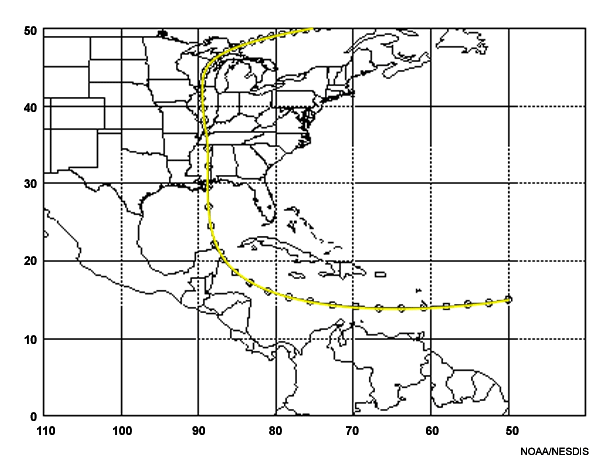Remember that a hurricane is much larger than its eye, which is what the computer model forecasts, so the actual area affected by the hurricane would be much larger than the path indicated by the computer model track.
Of course in real life, the tricky part is that, while the hurricane is moving, so are the low and high pressure systems, as well as other weather systems around the entire earth. And other changes can be happening at the same time. For example, the hurricane might travel over a layer of colder water or into a region where the winds are much stronger. The low or high might strengthen or weaken. So, if you were the forecaster, you would have to decide whether the hurricane was going to stay on course, veer in a different direction, stall, weaken, or strengthen.
